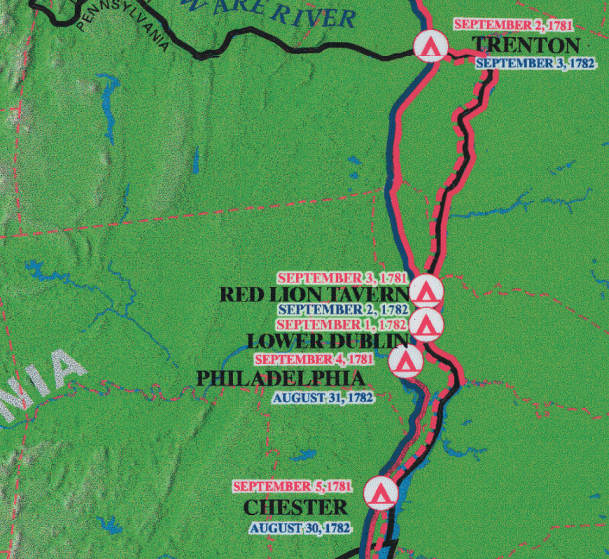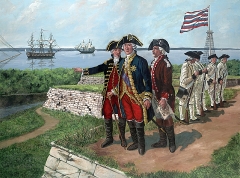March through Pennsylvania
Latest changes: 2009-07-16: split off DE /NOTE: These W3R® campsite-and-trail maps were developed
during the 2000-2005 National Park Service study of significance,
feasibility, and environmental impact.
The orientation is tilted; north is about 45-degrees left of straight up.

The Pennsylvania portion of the W3R® campsite map.
 A Note about "Official" W3R® Routes
A Note about "Official" W3R® Routes
==== PENNSYLVANIA ====Sept 2 -- Red Lion's Tavern (Bristol) (10 miles via Rt 13)
The American elements in the lead passed through Philadelphia
on this day. They let their distress about lack of pay be known
and demanded a month's pay before proceeding. American currency
had collapsed, so Robert Morris (Superintendant of Finances for
the Continental Congress) had to borrow $20,000 from Rochambeau
in order to pay the American troops and continue the march.
 Expèdition Particulièe (E.P.) Web site Expèdition Particulièe (E.P.) Web site
Sept 3 -- Philadelphia (20 miles via Rt 13) The French troops, resplendent in their regimental uniforms and crisp style, paraded through town in two divisions on Sept 3 and 4. Rosters for the French force at this time note 4,200 troops and non-commissioned officers, (an estimated 600 officers), 857 men in hospitals (including Boston and Newport), and 253 left behind on the road (messengers, guarding provisions). [Ref. Dr. Selig's report for Pennsylvania.]
Sept 5 -- At Chester (10 miles via Rt 13)
Washington received news of the British squadron continuing to New York without
having engaged de Grasse's fleet, and he danced for joy.
|

